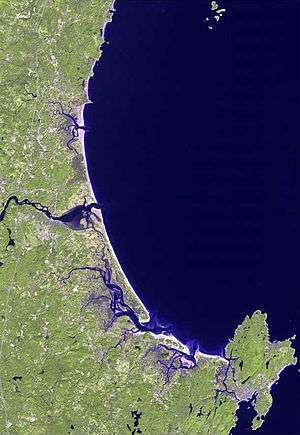Agawam tribe

The Agawam tribe was a Native American tribe in New England at the arrival of the English colonists in the early 17th century.[1] Decimated by pestilence shortly before the English colonization and fearing attacks from their hereditary enemies among the tribes of Maine, they invited the English to amalgamate with them on their tribal territory. Colonial law promulgated by the General Court of Massachusetts protected them, their land rights and their crops. The English defended them against further attacks. They had an open invitation to enter Puritan households. Often a small number would show up as dinner guests and were fed. By the time of King Philip's War in 1675 they had been assimilated. They played no part in the war.
Name
The name is an anglicization of the native name assigned to the territory of a sovereign state consisting of the tribe. The English named the tribes after their native place names; therefore it is likely that the natives did also; i.e., Agawam is an English exonym based on a native endonym. The territory is written as Wonnesquamsauke, from wonne, "pleasant," asquam, "water" and auke, "place." [2] The state extended from Cape Ann to the Merrimack River, covering the coastal region of the current eastern Essex County, a country of rivers, bays, barrier islands, necks and wetlands, location of Great Marsh, Plum Island and Newburyport Harbor. A number of place names were anglicised from the territorial name: Agawam and Squam from asquam,[2] Annisquam from Wonnesquam.[3] Inland the edge of their territory went from North Andover to Middleton, and from there to the Danvers River, which was the border with the Naumkeag tribe of Salem, Massachusetts.[4]
Varieties of the English name were used also for small tribes near Springfield, Massachusetts and Wareham, Massachusetts. There is no evidence that they were connected in any way to the Essex County Agawam; in fact, the former were of the Pacomtuc and the latter of the Wampanoag. The large variety of English variants indicates an origin from different endonyms, such as "the fish-curing place."[5] These natives did participate in King Philip's War, causing some loss of life among the colonials with whom they formerly resided in peace.
Language
All the natives of the east coast of the United States and Canada from Nova Scotia to South Carolina spoke Eastern Algonquian, a language group belonging to the Algonquian family, but separated from the rest of it by the Appalachian mountains. Eastern Algonquian included Massachusett, spoken on the coast of Massachusetts. The latter family was divided into more closely related languages, or dialects, one of which was that of the Agawam of the North Shore.
Society
Each Algonquian language marks the range of a sovereign state, or tribe, ruled by a hereditaty sachem, or chief. He had additional chiefs to assist him. The basis on which the position of sachem was defined was economic. He personally was considered to own all the lands used for common food gathering and production.[6] He distributed the use of these to groups of families under sub-chiefs at his discretion, an arrangement that facilitated the disposal of native lands to the English by negotiation with a single sachem, who may not have understood that the purchased land was being permanently removed from the commons of the tribe. The sachems reigning at the time entered history with the arrival of the English in the early 17th century. The sachem of the Agawam was Masconomet.
References
- ↑ Piotrowski, Thaddeus M. (2002). The Indian heritage of New Hampshire and northern New England. Jefferson, NC: McFarland. pp. 87–88. ISBN 0-7864-1098-1.
- 1 2 Schoolcraft, Henry Rowe; Drake, Francis Samuel (1884). The Indian tribes of the United States: their history, antiquities, customs, religion, arts, language, traditions, oral legends and myths. Volume 1. Philadelphia: J.B. Lippincott & Co. pp. 258–259.
- ↑ Douglas-Lithgow, R. A. (2001) [1909]. Native American Place Names of Massachusetts. Bedford, Massachusetts: Applewood Books. p. 87. ISBN 1-55709-542-6.
- ↑ Perley, Sidney (1912). The Indian land titles of Essex County, Massachusetts. Salem, Massachusetts: Essex Book and Print Club. p. 3.
- ↑ Hodge, Frederick Webb, ed. (1907). "Agawam". Handbook of American Indians north of Mexico. Smithsonian Institution Bureau of American Ethnology Bulletin 30. Part I. Washington, DC: Government Printing Office. p. 21. Some variants: Agawaam, Agawomes, Agissawamg, Agowaum, Agowaywam, Aguwom, Angawom, Anguum, Augawam, Augawoan, Augoam, Augoan, etc.
- ↑ Russell 1980, p. 22
Bibliography
- Russell, Howard S. (1980). Indian New England Before the Mayflower. Lebanon, NH: University Press of New England. ISBN 0-87451-162-3.